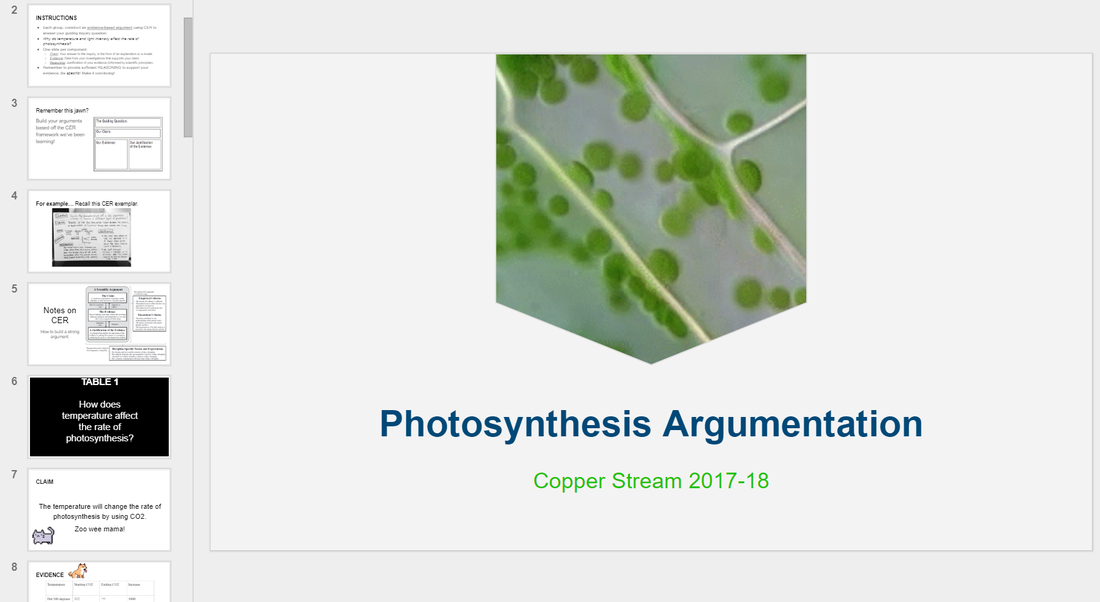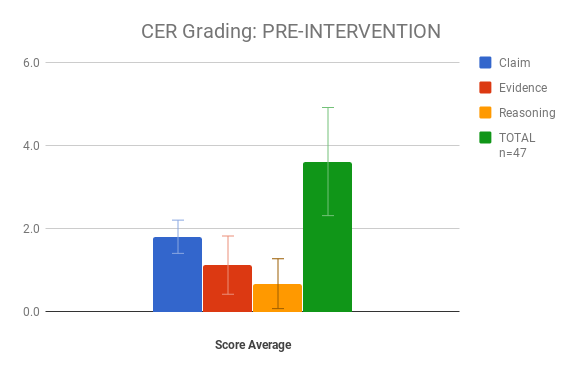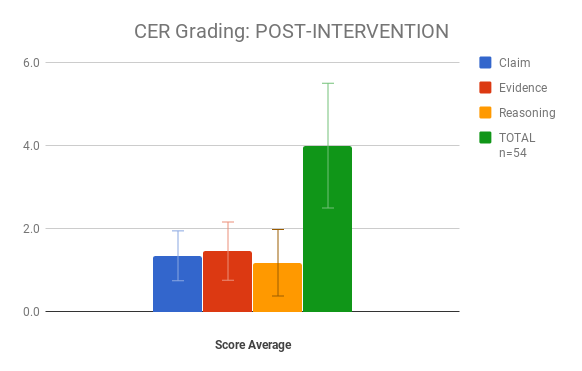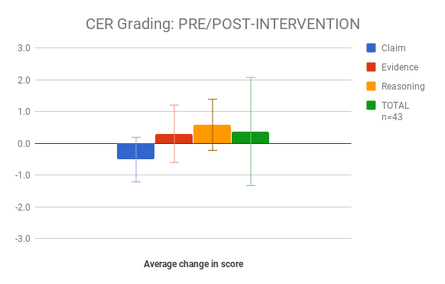FINDINGS: Student growth and responses to learning argumentation.
Near the completion of my student teaching, I was looking for a significant summative experience in which students could practice scientific argumentation one final time for my thesis. I then found Sampson's work, which includes a 15-count set of lab investigations set around ADI. In pursuing the goals of both inquiry and argumentation, this was appreciated!
When I introduced students to this framework, they also appreciated that this would let them step into the roles of scientists. In principle as well, they enjoyed the freedom and challenges associated with leading their own inquiry-based investigations.
When I introduced students to this framework, they also appreciated that this would let them step into the roles of scientists. In principle as well, they enjoyed the freedom and challenges associated with leading their own inquiry-based investigations.
|
This investigation was performed in five stages, according to Sampson's ADI model:
|
For most students, having to design their own experiments, gather their own data, and finally their own build scientific arguments was a complicated and challenging task. Even with scaffolds, strategies, and graphic organizers provided, students report this lab being a stressful experience for them. Namely, this was because they struggled to get data that they felt supported their claim. In measuring photosynthesis, for example, several groups' measurements indicated that oxygen production was going in the opposite direction than it should have. Troubleshooting and reasoning through this discrepancy was rewarding for some, and defeating for others.
That said, students did improve in their argumentation scores!
Comparing CER data between pre- and post-intervention responses, students earned higher scores overall. It's great to see that, even after a frustrating lab experience, so many students increased their skills in providing evidence and reasoning!
Student scores for writing claims, however, did go down. This is likely because their first prompt was a yes/no question, making their first assessment much easier to build a claim for. The question itself was simple (however, researching evidence and supporting it with reasoning from the unit was much more difficult.) In the post-intervention assessment, in comparison, students had more freedom in how they built their claims – which, naturally would lead to more variation in the claims. I predict that more opportunities for practice and consistency of the type of inquiry would have been more beneficial in this area.
That said, students did improve in their argumentation scores!
Comparing CER data between pre- and post-intervention responses, students earned higher scores overall. It's great to see that, even after a frustrating lab experience, so many students increased their skills in providing evidence and reasoning!
Student scores for writing claims, however, did go down. This is likely because their first prompt was a yes/no question, making their first assessment much easier to build a claim for. The question itself was simple (however, researching evidence and supporting it with reasoning from the unit was much more difficult.) In the post-intervention assessment, in comparison, students had more freedom in how they built their claims – which, naturally would lead to more variation in the claims. I predict that more opportunities for practice and consistency of the type of inquiry would have been more beneficial in this area.
|
An increase in CER scores has been observed.
However, this is not necessarily indicative of any change in argumentation ability -- since the two measures of assessment in these charts were so different. More compelling would have been to use identical task performances for students. Furthermore, though Sampson et al's ADI intervention demonstrated "better disciplinary engagement and better arguments", extended intervention and testing on my part would be needed in order to assess for similar claims. Sampson's study, specifically, involved 15 ADI laboratory activities implemented over the course of 18 weeks, whereas my inquiry was performed with a more varied sampling of argumentation activities over the course of about two months. |
Overall, this is a practice that I hope to continue to develop in my future teaching.
On the next page I will conclude this thesis with survey data from students and concluding remarks for future practice.
On the next page I will conclude this thesis with survey data from students and concluding remarks for future practice.




